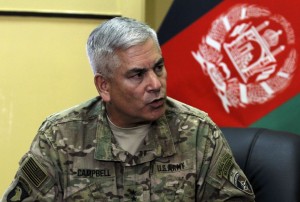Latest News
More troops may be needed in Afghanistan: Gen. Campbell
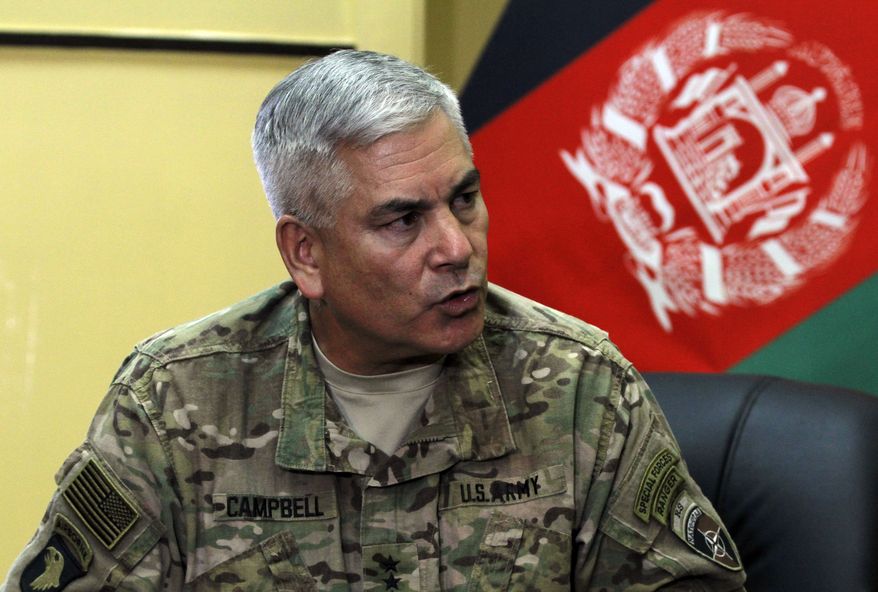
The top US and Nato military commander in Afghanistan may seek additional American troops to help local forces as they struggle to contain the Taliban insurgency, according to reports.
Army Gen. John Campbell said in an interview with USA TODAY that maintaining the current force of 9,800 U.S. troops to train Afghan forces and conduct counter-terrorism raids is vital, and that the scheduled reduction to 5,500 by Jan. 1, 2017, should be put off as long as possible.
“My intent would be to keep as much as I could for as long as I could,” Campbell said by telephone from Kabul. “At some point it becomes physics. I’m going to have to get them out.”
News from Afghanistan in 2015, when American troops ended their daily combat mission after 14 years, has been grim.
Taliban insurgents stormed the northern provincial capital of Kunduz in October and were pushed out after fierce fighting that included an inadvertent attack by a U.S. warplane on hospital that killed 42 civilians.
In the south, Taliban insurgents have battered Afghan troops in Helmand province; an al-Qaeda training camp was also discovered there and destroyed.
Islamic State fighters have set up outposts in the east. Last week, six U.S. airmen were killed by a suicide bomber outside Bagram Air Base.
The Pentagon’s own quarterly assessment of security in Afghanistan this month noted that in “the second half of 2015, the overall security situation in Afghanistan deteriorated with an increase in effective insurgent attacks and higher (Afghan security force) and Taliban casualties.”
Campbell will be Washington soon to brief senior leaders on the security situation in Afghanistan and troop levels required for their missions. He declined to offer specifics on his recommendations, saying they were classified.
“Some of them will not go over well with people,” Campbell said. “Some of them will get approved.”
In October, President Obama announced that he was reversing his decision to withdraw all but embassy personnel by the end of 2016. Instead, 9,800 U.S. troops will remain through most of 2016. After that, the residual force of 5,500, Obama said, will be a key part of a counter-terrorism network stretching west into Africa.
The long-term U.S. commitment by Obama encouraged Afghan leaders, troops and neighboring Pakistan, Campbell said. Still, Campbell said he won’t hesitate to ask for more troops for Afghanistan if necessary. He has commanded all NATO forces there since Aug. 2014.
“My job as commander on the ground is to continually make assessments,” Campbell said. “Every time I’ve gone to the president and said, ‘I need X,’ I’ve been very, very fortunate that he’s provided that. So he’s been very flexible. It’s actually been conditions based as we’ve gone forward.
“If I don’t believe that we can accomplish the train, advise and assist and the (counter-terrorism) missions, then I owe it to the senior leadership to come back and say, ‘Here’s what I need.’ If that’s more people, it’s more people.”
Campbell is a highly regarded officer and former vice chief of staff for the Army. If he does ask for more troops, he’ll have high-profile allies on Capitol Hill, including Rep. Mac Thornberry, the Texas Republican and chairman of the House Armed Services Committee.
Thornberry called the troop level of 9,800 “a political number to make sure we were under 10,000.” If more U.S. troops are needed, and if they need greater leeway in prosecuting the war, Campbell should have them, Thornberry said in an interview.
“The sheer lack of numbers as well as the restrictions our folks are put under handicap our efforts,” Thornberry said.
Earlier this year, U.S. troops were stretched so thin that they advised their Afghan partners by video conference, Thornberry said. He said he’d rely on commanders for a recommendation on troop levels, adding that they had sought as many as 20,000.
“Nobody is looking to re-insert 100,000 combat troops,” he said.
Michael O’Hanlon, a military analyst at the Brookings Institution who recently traveled to Afghanistan, said a contingent of 12,000 U.S. troops would be able to advise Afghan forces involved in the toughest fights and to battle terrorists. At that level, in teams ranging from dozens to hundreds, U.S. troops could provide the sort of expertise they offered Iraqi forces in retaking Ramadi this week from Islamic State fighters, he said.
In any event, O’Hanlon doesn’t expect decisions so soon after Obama agreed to the October commitment of troops that will extend into the next administration.
“The next president is still going to be in Afghanistan,” O’Hanlon said. “We should think of it as shoring up the eastern flank in the fight against extremists.”
The news from Afghanistan is not all dire, Campbell said. He cited some signs of progress: the number of high-profile suicide bombings that killed or wounded people dropped 36% from 262 in 2014 to 168 in 2015.
“When I drive around Kabul, it’s busy,” he said. “Traffic is almost as bad as Washington, D.C. All the stores are open. It’s still a vibrant city.”
For 2016, Campbell has issued four challenges to Afghan troops, he said. First, they need to drive down attrition by creating a system that allows troops to train, fight and rest to drive down rates. The Afghan military also needs to move from manning checkpoints to taking the fight to the Taliban. Finally, military brass needs to root out bad commanders and do a better job recruiting.
“I think this will drive the Taliban to the peace table,” Campbell said. “If they don’t do those things, it’s going to be a tough fighting season.”
The stakes for the Afghans and the United States couldn’t be higher, he said.
“If we don’t stay engaged here to build their capacity to fight this, keep sanctuary down, it’s coming back to the homeland,” Campbell said. “So it’s pay a little bit now, build the capability, and keep this an away game as opposed to a home game.”

Latest News
SIGAR claims almost $11 million in US funds paid to IEA government
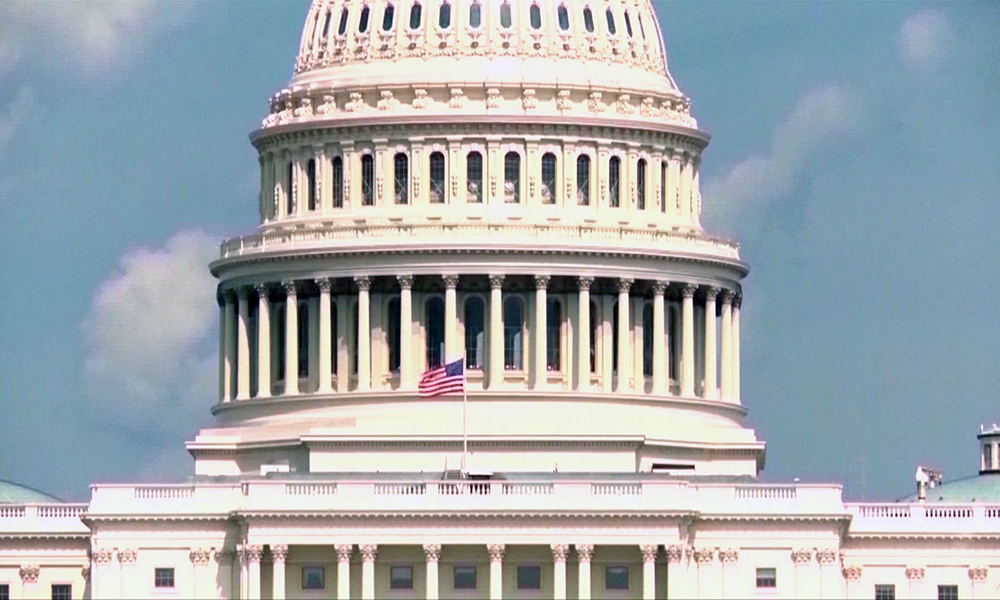
The Office of the Special Inspector General for Afghanistan Reconstruction (SIGAR) said in its latest audit report that US government implementing partners paid at least $10.9 million to the Islamic Emirate government in the form of taxes, fees, import duties, or for the receipt of permits, licenses, or public utility services since August 2021.
SIGAR also claimed the IEA “disrupted implementing partner activities through various means, including attempts to divert aid or infiltrate nongovernmental organizations (NGOs) and interfere with their activities, which in some cases, negatively impacted the implementation of activities and diverted aid from the intended beneficiaries.”
SIGAR stated that of the $10.9 million, $10.4 million was spent on taxes; $346,839 on payments for utilities; $176,596 on fees; and $9,215 on customs duties.
SIGAR also found that the $10.9 million paid by 38 US Department of State (State), US Agency for International Development (USAID), and US Agency for Global Media (USAGM) implementing partners is likely only a fraction of the total amount of US assistance funds provided to the IEA in taxes, fees, duties, and utilities.
SIGAR reported this is because “UN agencies receiving US funds did not collect data or provide relevant information about their subawardees’ payments.”
According to SIGAR, from October 2021 through September 2023, the UN received $1.6 billion in US funding for programing in Afghanistan, approximately 63% of all US assistance funding for Afghanistan during that period.
“UN agreements with State and USAID do not include any requirements to annually report on taxes, fees, duties, or utilities incurred on US funds provided for activities in Afghanistan,” SIGAR stated.
SIGAR noted however that “implementing partners can experience significant consequences if they fail to pay the taxes, fees, duties, and utilities required by the Taliban-controlled (IEA) government of Afghanistan.”
However, Zabihullah Mujahid, the spokesman of the Islamic Emirate, said in response to SIGAR’s latest report that Afghanistan’s caretaker government does not interfere in the process of distributing aid and the work of institutions.
Latest News
Almost 300 people dead in floods in past 10 days
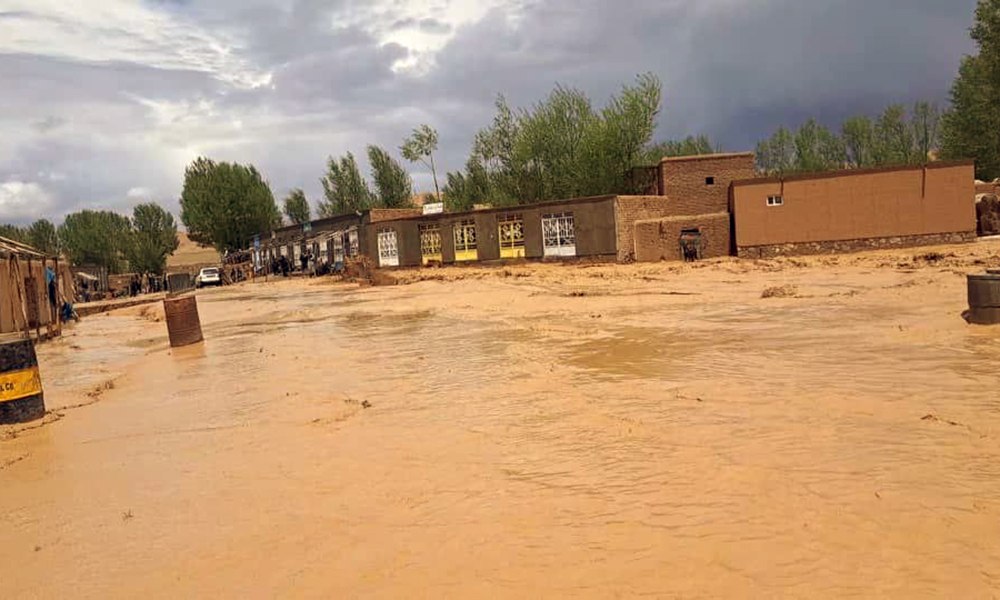
At least 294 people have died and 266 others have been injured in floods over the last ten days, the ministry of state for disaster management confirmed Tuesday.
According to the ministry, the floods have had an enormous financial impact on 14 provinces in the country.
The spokesman said 14,923 houses have been completely or partially destroyed and so far more than 17,000 families have been given emergency aid.
The process of providing relief is ongoing, he said.
In the past 10 days, 14 provinces experienced devastating floods due to heavy rains, especially Baghlan, Takhar, Ghor, Badghis, Badakhshan, Samangan and Faryab.
Janan Saiq, the spokesperson for the Ministry of State for Disaster Management says 294 have died and 266 others have been injured.
In addition, 14,923 houses were affected, either partially or completely damaged while 6,000 livestock were wiped out.
Saiq said assessment teams rushed to help the flood victims as soon as possible and so far more than 17,000 families have been provided with aid.
He said more families were still in need of emergency assistance and that they would be provided with help.
Aid provided by the ministry included food, clothes and tents. Saiq said shelters will also be provided to the flood affected people.
At the same time the United Nations says that Afghan women and children have suffered the most in the recent floods. The United Nations Women’s Office, stated in a report on the situation of flood victims in a number of northeastern provinces of Afghanistan, that women and children were disproportionately affected by this natural event, because they were inside their homes during heavy rains.
According to the report among the injured are 74 women and 51 children under the age of five. Another 220 people needed medical help, including 79 women, 74 men and 67 children. UN Women said that women and girls in particular need health packages and health products, as well as nutritious food for pregnant and lactating women.
At the same time, UNAMA also says that 60,000 people were affected by the flood in Baghlan province.
According to the UN, 182 people, most of whom are women and children, died in Baghlan following the recent floods. UNAMA humanitarian affairs deputy said that UN humanitarian teams have been deployed to help the flood victims in Baghlan, Takhar and Badakhshan provinces.
Indrika Ratwatte added that so far, about 15,000 flood-affected people in northern Afghanistan have been supported by the United Nations and its partners.
On the other hand, UNAMA’s humanitarian aid coordinator in Afghanistan has emphasized that the international community should support the people of the country and help meet the needs of those affected by the floods.
Latest News
200 tons of aid from Uzbekistan arrives in Afghanistan for flood victims
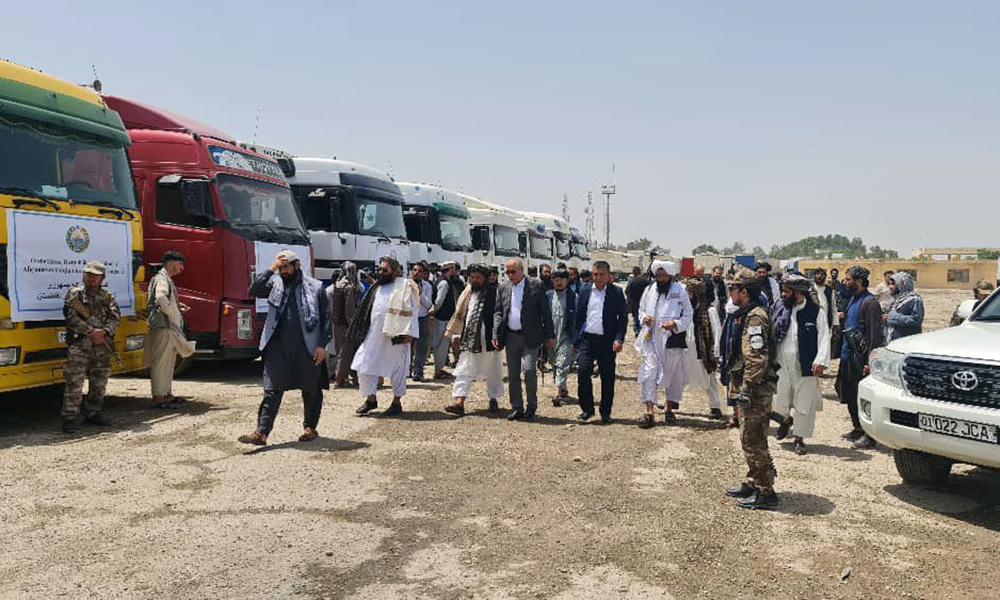
Two hundred tons of emergency relief from Uzbekistan for flood victims has arrived at the Hairatan border post in northern Afghanistan and handed over to representatives of the Islamic Emirate on Tuesday.
The aid from Uzbekistan for flood victims included 48 tons of flour, 22 tons of rice, 100 tents, and 96 water tanks.
Rahmatul Haq Fazil, Afghanistan’s deputy minister of foreign affairs, said relations between Afghanistan and Uzbekistan were historical and that Uzbekistan has always cooperated with the people of Afghanistan and taken positive steps in the political, economic, commercial and transit sectors.
At the same time, Ismatullah Irgashev, Uzbekistan’s special envoy for Afghanistan, said a path has been paved for the expansion of relations between the two countries.
Since the Islamic Emirate’s return to power in August 2021, Uzbekistan has sent in 10 shipments of aid following a spate of natural disasters over the past two and a half years.
-

 Sport4 days ago
Sport4 days agoT20 World Cup warm-up match schedule released, Afghanistan to face Oman and Scotland
-
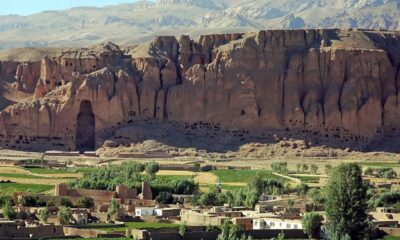
 Latest News4 days ago
Latest News4 days agoGunmen kill three foreigners in Bamyan
-

 Sport3 days ago
Sport3 days agoRashid Khan returns home, officially introduced as AWCC’s brand ambassador
-
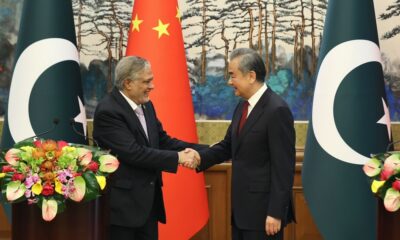
 Latest News4 days ago
Latest News4 days agoChina and Pakistan call for inclusive ‘political framework’ and ‘moderate policies’ in Afghanistan
-

 Latest News4 days ago
Latest News4 days agoSpain confirms three tourists killed in Afghanistan attack
-
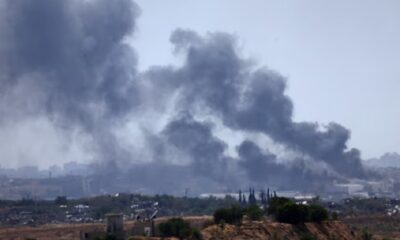
 World3 days ago
World3 days agoFierce fighting in northern Gaza as aid starts to roll off US-built pier
-
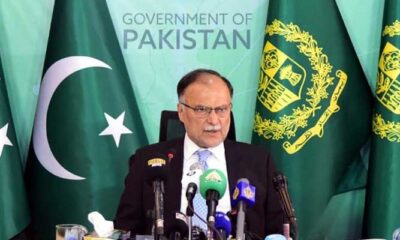
 Latest News2 days ago
Latest News2 days agoIslamabad wants Beijing to talk to Kabul about terrorism, Pakistani minister says
-

 World3 days ago
World3 days agoSaudi crown prince, US national security adviser meet on Gaza, bilateral deal

